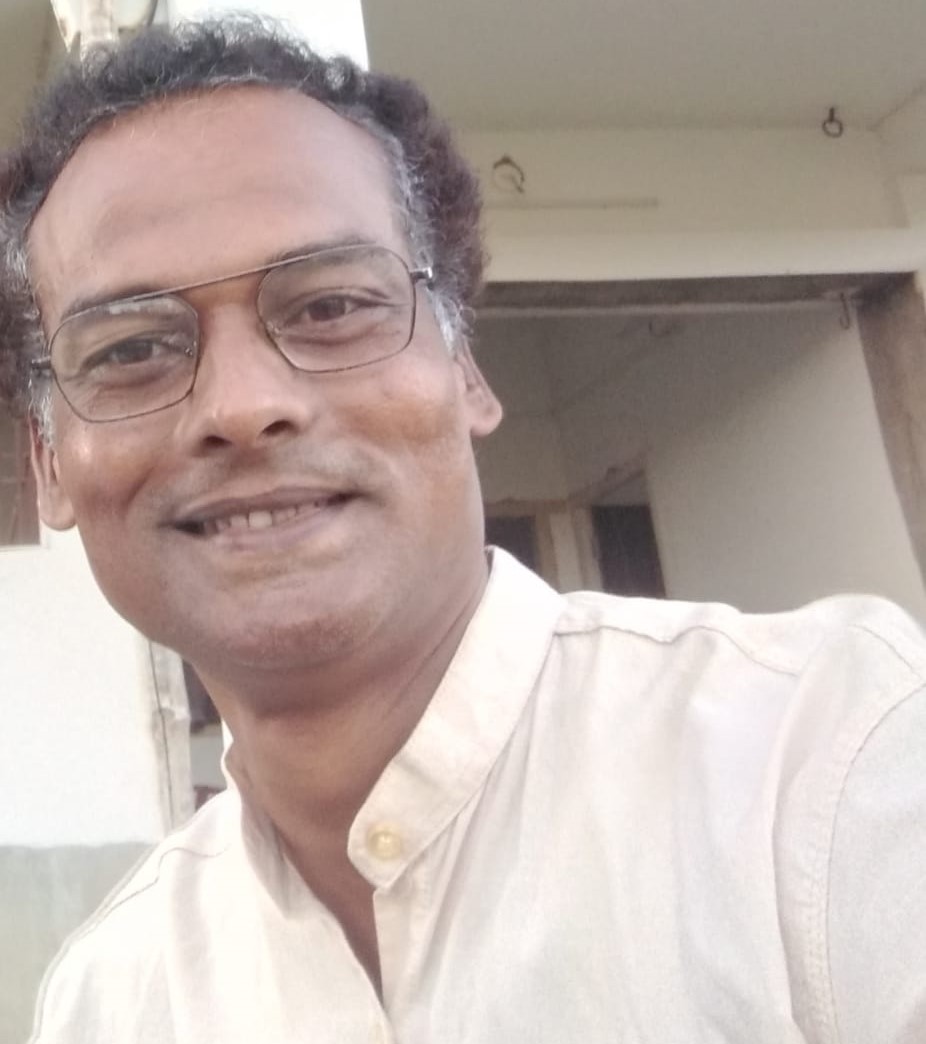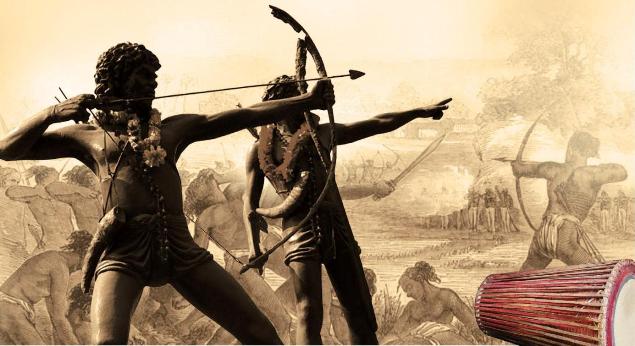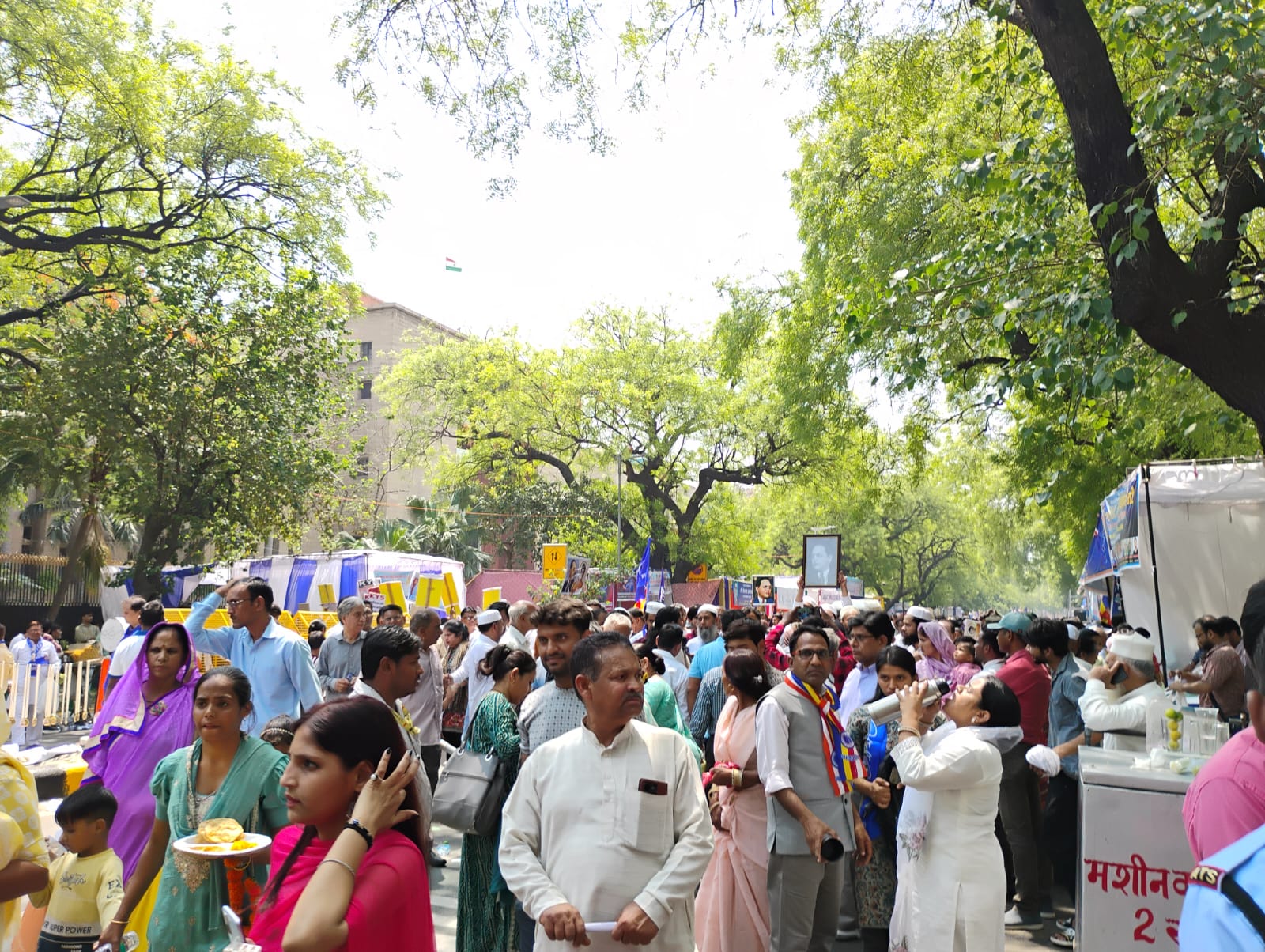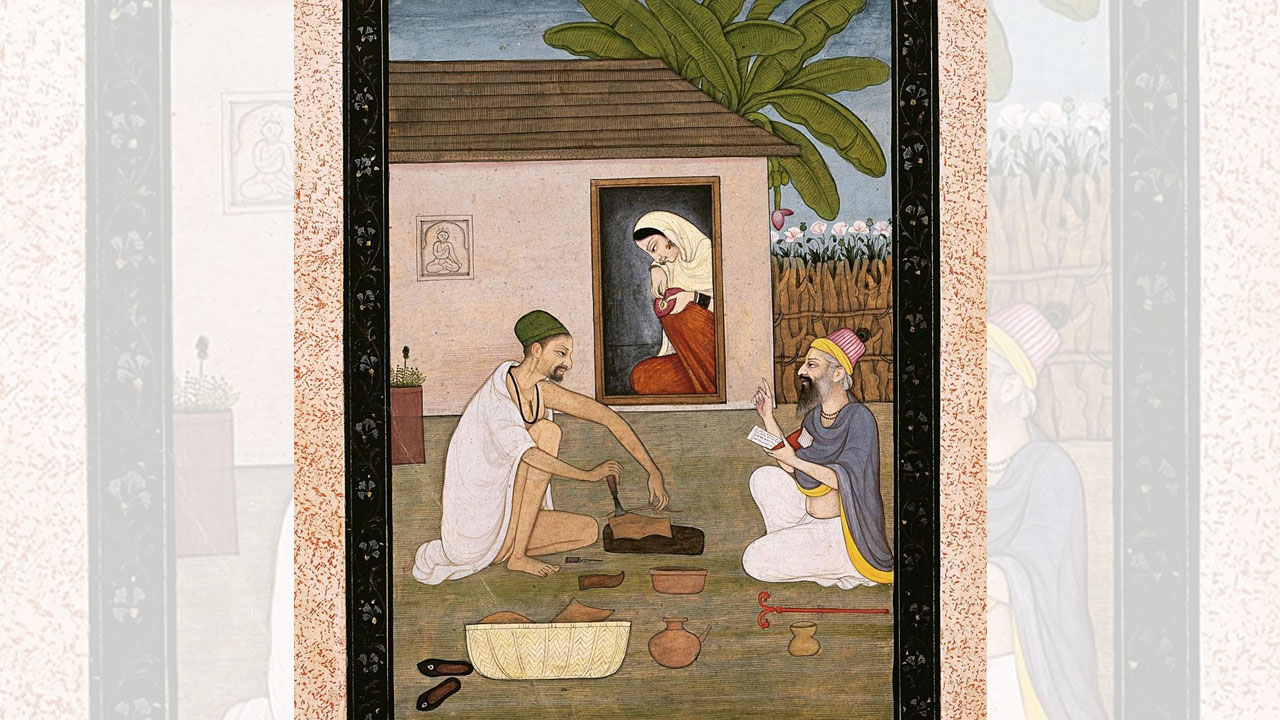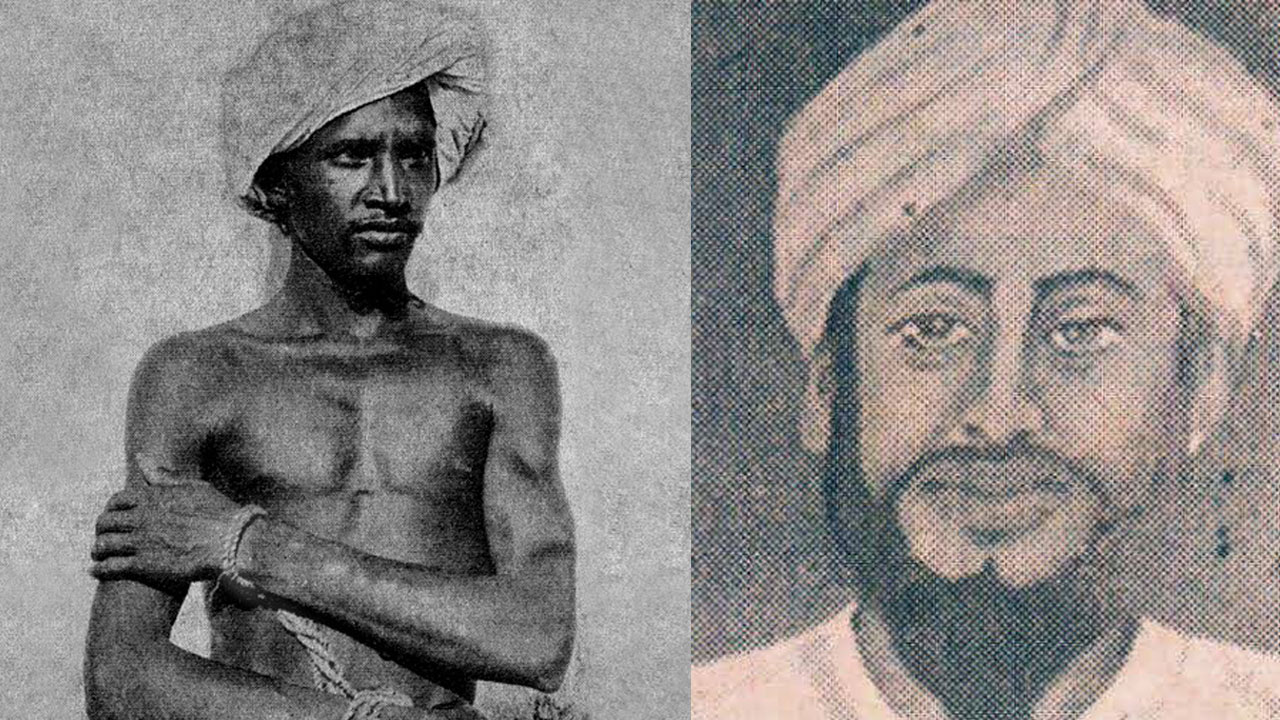Tilka Manjhi was the first warrior and martyr of the Indian Freedom Struggle. This is proving to be too strong a claim to be kept out of the pages of the history of the struggle, which still holds that the revolt of 1857 launched the struggle and Mangal Pandey was the first hero. The Adivasis had laid the foundations of the freedom struggle long before 1857.
The Bhagalpur-Santhal Pargana region was an epicentre of the Indian struggle against the rule of the East India Company. Tilka Manjhi led the Pahadia tribe of the Bhagalpur-Rajmahal area in the first organized revolt against Company rule in 1772. In 1770, Tilka Manjhi sent pieces of the bark of the Sal tree, with a thread tied around each of them, to all Santhal and Pahadia villages as an invitation to join the revolt. On 30 June 1855, Sido, Kanhu, Chand, Bhairav, Phulo and Jhano led the historic Hul (rebellion) against the Company. Thousands of men and women from hundreds of villages had joined this revolt, which preceded the revolt of 1857 and began from Bhognadeeh (Barhait) in the then Bhagalpur district. Now, Bhognadih is a part of the Sahibganj district of Jharkhand.
The caste-varna system has been a key determinant of what constitutes history and what doesn’t. The struggles of those on the margins of society remained on the margins of history as well. On occasions, they were completely effaced. No wonder the struggles of the Adivasis and their heroes did not get their due place in history. Tilka Manjhi, the first martyr of the Indian Freedom Struggle, was no exception. He is still missing from the mainstream history books.
But Tilka Manjhi remained alive in the collective memory of the oppressed communities and it was impossible to erase his memories from the land of Bhagalpur, where his blood was spilt. Bhagalpur still reveres him.

On 15 November 2001, Jharkhand was carved out from Bihar. But the name of martyr Tilka Manjhi is still taken with reverence in Bhagalpur. However, this land where he fought and which still cradles his history and his past and which was the first to give him recognition and pay tribute to him, has a negligible Adivasi population today.
But even in Bhagalpur, there are people who question his historicity. Then, there are those who accept that he lived but dispute whether he was a Santhal or a Pahadia. But even amid questions, doubts and disputes, he is an undisputed and a dear hero of the oppressed communities, the Bahujan of the Bhagalpur area. The intersection where he was hanged has been named after him and his statue has been installed there. The land was earlier freed from their clutches of a mafia. A nearby park has also been named after him. The local university, too, carries his name. A statue of Tilka Manjhi in the act of taking an aim with his bow and arrow, stands outside the administrative building of the Tilka Manjhi Bhagalpur University.
A short distance from Manjhi’s statue stands a memorial to Augustus Cleveland, in front of the Tilha Kothi, where Cleveland lived as the first collector of Bhagalpur. The building is now known as Ravindra Bhawan and houses the Department of Ancient History. The heroics of Tilka Manjhi were intertwined with Cleveland.

When the army of the East India Company failed to suppress the Pahadia rebellion that commenced in 1772, the Company deployed their favourite tactic of “divide and rule”. They tried to woo the Pahadia people and at the same time, raised battalions of Hill Corps and Hill Rangers from among them to secure their support. In 1779, Cleveland was appointed the first collector of Bhagalpur. Soon, he assumed the leadership of the military campaign against the warriors led by Tilka Manjhi. Cleveland was injured in an attack by Tilka Manjhi and his men in a battle in the Teetapani forests. He handed over charge to his deputy Charles Cockerel and left for England for treatment. He died on the way on 13 January 1774. At the time he was 29. This triggered a reign of terror in the Rajmahal area.
In 1775, Tilka Manjhi and his men took position in a village (now known as Tilakpur or Tilkapur) on the road connecting Sultanganj with Bhagalpur. The Company’s army was to take this road to reach Bhagalpur. In the ensuing battle, Tilka Manjhi took a bullet on his shoulder. The injured Manjhi was captured and whipped. He was tied to horses and dragged to the intersection in Bhagalpur, where he was hanged from a banyan tree. The day was 13 January 1775 – exactly a year from Cleveland’s death.
The demand for giving Tilka Manjhi his due place in history began gaining momentum in the 1980s and 1990s. It began in Bhagalpur. For decades, the students of the Bhagalpur University spearheaded the movement in support of this demand. According to Dr Vilakshan Ravidas, former head of the University Department of Ambedkar Thought and Social Work, Mahashweta Devi’s novel Shaal-Girah Ki Pukar Par played a key role in bringing to light the life and the struggles of Tilka Manjhi. According to Ravidas, who taught for years in the postgraduate department of history in the university, it was in 1978-80 that the demand for commemorating Tilka Manjhi on his birth anniversary and installing his statue at the Manjhi Chowk was first raised. The initiative was taken by the Dalitbahujan students who lived in the SC-ST (Scheduled Castes-Scheduled) Tribes hostel of the university. Ultimately, 195 years after his martyrdom, in 1980, Tilka Manjhi’s statue was installed on the roadside a short distance from the Tilka Manjhi Chowk. This was the first time his statue was installed anywhere in the country. At the time, a banyan tree was planted near the spot to keep memories of his supreme sacrifice alive, for the British had hanged him from a banyan tree.

The Dalitbahujan students of the university played a key role in resurrecting Tilka Manjhi’s martyrdom. Dr Kapildev Mandal, a former member of the University Senate, who was associated with the students’ movement in those days, says that in the 1980s, the Progressive Student-Youth Front began the tradition of grand celebrations of Manjhi’s birth anniversary on the university campus on May 11 every year. It is believed that Tilka Manjhi was born on 11 May 1750. Later, the observance of his martyrdom day also became a tradition in the university.
Dr Mandal says that Students’ Coordination Committee – a joint front of left-democratic students’ organizations – launched an agitation demanding that the stadium of Bhagalpur University and Ravindra Bhavan (formerly Cleveland’s residence), which stands atop a mound in front of Cleveland’s memorial, be named after Tilka Manjhi.
It may be mentioned here that the social composition of the colleges and universities had begun changing from the 1980s. The Bahujan students collectively began challenging the dominance and hegemony of the Savarnas. That is also when Manjhi emerged as a hero of the Dalitbahujan students of Bhagalpur University. When those on the margins assert themselves, it impacts history, too. This happened in the case of Tilka Manjhi. His claim to a place in history was not limited to the research studies and academics. The Hindi belt witnessed cataclysmic social and political changes from the end of the 1980s to the beginning of the 1990s. The Savarnas’ hold on socio-political power was weakening. In Bihar, the Savarnas lost power and Lalu Prasad Yadav became chief minister. The Bahujan students were also militating against Savarna hegemony. They wanted justice to their icons who were kept out of the history books. The 1990s not only changed the society and politics of Bihar but also chronicles of the past.
In 1991, Lalu Yadav came to Bhagalpur to lay the foundation stone for the Vikramshila Bridge on the Ganga. A delegation of Bahujan leaders, under the aegis of Students’ Coordination Committee, met the chief minister and demanded that the Bhagalpur University be named after Tilka Manjhi. The demand was accepted and in 1993 Tilka Manjhi’s statue was installed at the Tilka Manjhi intersection.
The brahmanical Savarna forces could not digest the naming of the university after Tilka Manjhi. At the time, the Congress’s student’s wing National Students of Union (NSUI) represented the Savarna students. The Savarna intellectuals and historians also questioned the historicity of Manjhi.
After the renaming, a long struggle had to be waged for getting Manjhi’s statue installed in front of the university’s administrative building.
(Translated from the original Hindi by Amrish Herdenia)
